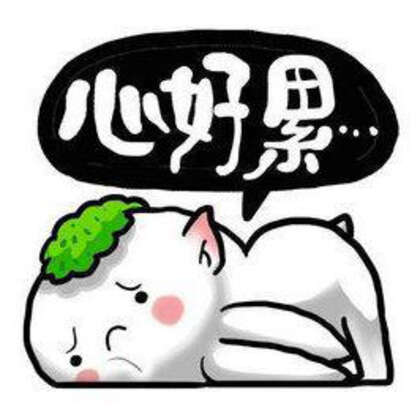和合人间文化园内进行文艺表演活动
美国作家查尔斯·弗雷泽(Charles Frazier)的代表作Cold Mountain ,于1997年一经面世就受到热烈欢迎,连续四十五周名列《纽约时报》畅销书榜,因“描写了人与土地复杂的关系及情感”而获美国国家图书奖、美国书商协会年度图书大奖,并在当时成为美国十大畅销书之一,被评论界誉为近代以来“美国文学中的巨作之一”,与《飘》并称为“20世纪美国文学双璧”。该书讲述的是美国南北战争结束之际,一位士兵为了自己的爱人而返回家园所经历的多灾多难的旅途。由曾经导演《英国病人》摘得奥斯卡金像奖的安东尼·明格拉(Anthony Minghella)执导、好莱坞影星妮可·基德曼(Nicole Kidman)和裘德·洛(Jude Law)主演的小说同名影片《冷山》(中文译名)一经上映,就广受好评,斩获国际大奖。
在弗雷泽小说的扉页有着两条引文,一条是达尔文的,还有一条就是从寒山诗中来的:“Menask the way to Cold Mountain. Cold mountain: there is no through trail.——Han Shan”(人问寒山道,寒山路不通。)这两条引语实际上是表明了全书的主题,前者表明对战争的无可奈何,后者则是寄托了主人公对于可望却不可及的美好生活之向往。
天台山和合文化在海外广泛传播并发生深刻影响的事实说明,和合文化的精神价值不仅符合中华民族对于美好生活的渴望,也体现了世界各地民众的生活理想,这是人类对于美好生活的共同期许。因此,它可以跨越国界,成为全人类的共同价值理想和生活信念。(作者系浙江大学哲学学院教授、台州学院和合文化研究院院长)
Sources of the Hehe Culture
The Hehe culture, which embodies the idea of harmony but not uniformity, is the essential feature of traditional Chinese philosophy, reflecting the wisdom of ancient Chinese in resolving self-existence and social development. As a result, Chinese civilization, with an open-minded and inclusive mind, has continued to grow and has been passed down to this day as a unique civilization form. The way of thinking and values of Hehe are widely accepted. In this sense, the traditional Chinese culture is a kind of Hehe culture, which is the essence of Chinese culture.
In the history of human civilization, there have been different cultural forms such as the Chinese culture, the Western culture, the Egyptian culture and the Indian culture. So, what is the Chinese culture? This is indeed a very difficult question to answer, because our cultural traditions are too rich, not only in form, but also in connotation. The Chinese culture is constantly changing, so that we cannot even accurately determine what kind of specific form it is. It is in such a dynamic process that the Chinese culture has gained a strong vitality, become the spiritual pillar of the Chinese people, and integrated into their blood. At present, the emphasis on Hehe is a distinct feature of the Chinese culture, and in a sense, its distinctive feature. But behind these contents, the spirit of Hehe has become a consistent tradition, the basic behavior and value of the Chinese people.
天台和合人间文化园之和合堂(和合婚庆仪式体验区)
Tiantai Mountain became famous for “Ode to Tiantai Mountain”, a piece written by Sun Chuo (314-371), magistrate of Zhang’an (in present-day Taizhou city). Since then, its beautiful landscape has been attracting poets and scholars in droves, and the emergence of “Tang Poetry Road” undoubtedly demonstrated this cultural style. Sun Chuo naturally linked this landscape with religious culture.
Both Buddhists and Taoists regarded Tiantai Mountain as a holy place — a holy place of religious culture and an ideal place for reclusion, which constituted the most profound cultural significance of Tiantai Mountain. After that, Master Zhiyi (538-597) entered Tiantai and founded the Tiantai Sect of Buddhism, inspired by the wisdom of Lotus Sutra. His basic propositions realized the integration and transcendence of various different theories of Buddhism in the Southern and Northern Dynasties (420-589), and his philosophical thinking and reasoning arguably surpassed previous philosophers in ancient China, as the famous Japanese philosopher and Buddhist scholar Daisaku Ikeda said: “In the long history of Buddhism, if you think that Sakyamuni is the sage who first proposed the fundamental principles of Buddhism, then it can be said that Tiantai (Zhiyi) is the philosopher who formed a philosophical and theoretical system from the fundamental principles. I think Buddhism, as a theory, reached its peak in Tiantai. ”
In the Song dynasty (960-1279), Zhang Boduan (987-1082), founder of the Nanzong (Southern Lineage) of Taoism, wrote the classic Wuzhen pian (literally “Folios on Awakening to Reality/Perfection”). By integrating of the three teachings of Confucianism, Buddhism and Taoism, and integrating Taoism with Chan (Zen) Buddhism, he created an important system — the Southern Lineage, in the history of Taoism. Both Buddhist Tiantai philosophy and Taoist Inner Alchemy, although different in the level of rationality, had a profound impact in their respective traditions as an expression of religious philosophy based on Hehe. As a manifestation of the Hehe culture, Tiantai Mountain culture is closely related to the acceptance of Hanshan and Shide as “Two Gods of Hehe” in the Chinese tradition.

